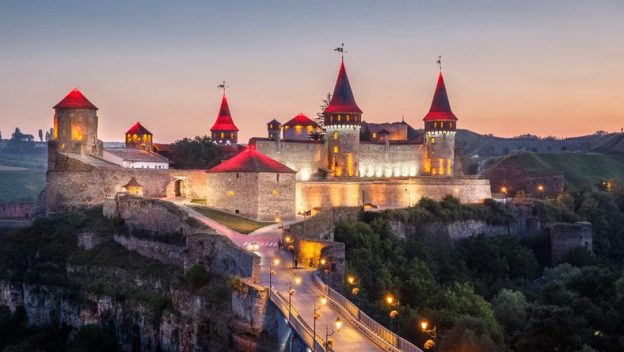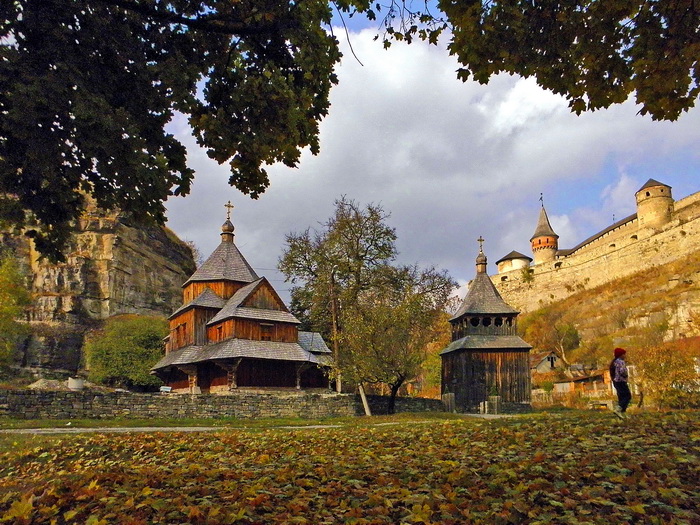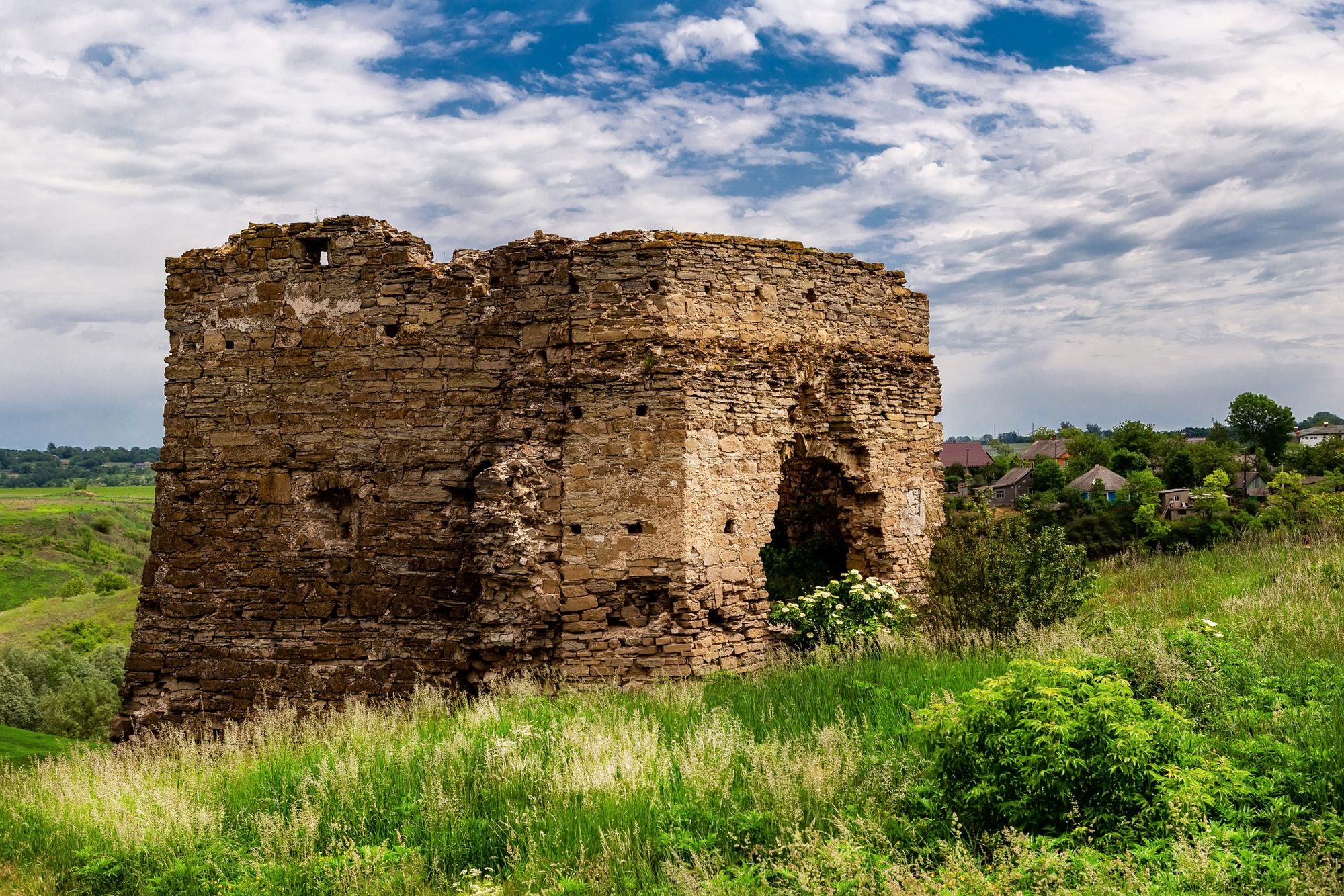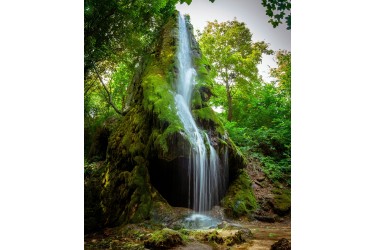List of key locations:
Old Town. Kamianets-Podilskyi
The Kamianets-Podilskyi Fortress
Kudrynets Castle
Atlantis Cave
Okopy
Khotyn Fortress
Zhvanetsky Castle
Kamianets-Podilskyi.
Evening program
Brief introductory description:
Podillia seems to be at the crossroads of history, elements and legends. From time immemorial, it was hot here, battles were fought, fortresses and human destinies were built and destroyed. We offer you to visit three legendary fortresses, as well as visit one of the most interesting caves in Ukraine – the Atlantis cave.
Short description of locations (entrance/visiting fee):
The tour starts from Kamianets-Podilskyi
The Old Town
Old Town is located on a peninsula in the loop of the river Smotrych. In the obligatory resolution for the residents of the city adopted by the City Council of Kamianets-Podilskyi regarding the construction part, issued in 1901 and supplemented in 1902, the note to paragraph 19 states: “ the Old Town is considered the central part within the river Smotrych. It is connected to the New Plan by the Novoplanivsky Bridge, and to the Kamianets-Podilsky Fortress, which is an integral part of the Old Town, by the Castle Bridge.”
The Kamianets-Podilskyi Fortress
Extremely attractive for fans of fortifications, the complex of fortifications of the New Castle, built in the 17th century, which is the only surviving example of this type of buildings of the Dutch school. The unique Castle Bridge, which connects the Old Town with the Castle Complex, is also of great interest. The Kamianets Fortress consists of eleven towers, each of which has its own name and history. Thus, the tallest tower was named Papal because it was built with funds sent by Pope Julius II. It is also called Karmeliukova because Ukrainian national hero Ustym Karmeliuk was imprisoned in it for three times. In the Black (corner) tower there is a well 40 m deep and 5 m in diameter, hollowed out in the rock. In the dungeons of the Castle complex there are expositions that recreate the pages of its history. In the western bastion, the panorama of the castle defense of 1672 during the Turkish invasion was reconstructed. In the eastern bastion there is an exposition dedicated to the history of light metal weapons in Podillia. In that bastion a visitor can shoot a crossbow, feeling like a medieval warrior. The system of passages and casemates has survived to our time.

Moving to Kudryntsi
Kudrynets Castle
The fortress was built by magnates Herburts in 1615 from local sandstone. The construction of a defensive fortress in this place was quite justified: the village lay near the Moldova border, on the Tatar Wallachian Way. The Tatars often attacked these lands in the 16-17th centuries. In the summer of 1648, Cossack groups led by Maxim Kryvonis and insurgent peasants drove the Polish garrison from Kudrynets Castle. It is also known that the Turks captured the castle in 1672 and 1694. At the beginning of the 18th century the castle was turned into the residence of the Humenetskis. The stone walls and towers were repaired, and a six-room apartment building was added to the east wall. Later, the Humenetskis were replaced by new owners, the Kozibrodskis, under whom the Kudrynets Fortress became a museum. The walls of the palace were decorated with family (and not only) portraits and antique furniture. Fragments of the Kudrynets collection are now exhibited in the halls of the Ternopil Regional Museum of Local Lore.
Moving to the village Zavallia to the Atlantis cave
Atlantis Cave
Near the village of Zavallia, Khmelnytskyi region, there is a 3-storey Atlantis cave. Stalactites and stalagmites form bizarre patterns of different colors. The cave has separate halls, galleries, grottoes, corridors, and bats. Be prepared that you will have to walk a lot, crawl, fight and completely smear yourself in clay. Special equipment, overalls and lanterns can be rented from supervisors.

Moving to Okopy, and then to Khotyn
Okopy
After signing of the Peace of Buchach between the Polish-Lithuanian Commonwealth and the Ottoman Empire in 1672, Kamianets and Khotyn fortresses passed into the hands of the Turks, which forced the Poles to build a fortress in the trenches to block the supply of Turkish garrisons in the captured fortresses. The village of Okopy is located on a rocky peninsula between the rivers Zbruch and Dnister in the narrowest and highest place.
Khotyn fortress
Khotyn Fortress is a witness to numerous wars and battles. For centuries, it has been a center for the development of crafts and trade, culture and economy. This medieval beauty can tell a lot to those who want to listen to it… It is no coincidence that our ancestors called the rocky cape over the Dnister – Khotyn. The name of the city comes from the Ukrainian verb “to want”, because the cape was a desirable and a reliable place for ancient settlers. Due to its strong and advantageous location, Khotyn became a center for the development of crafts and trade, which contributed to the flourishing of its culture and economy. The city was an important point in European-Asian trade.
Moving to Kamianets-Podilsky. On the way we stop at Zhvanetsky castle
Zhvanetsky Castle
The first brick fortifications of the castle appeared in the late 14th and early 15th centuries. The surviving north tower of the castle is built on the foundation of a three-walled tower, open from the middle. In the second construction phase, the height of the walls was increased. The stonewalls connected five towers, the sixth was the gate tower. The castle, except for the northern side, behind which the cliff began, was surrounded by a deep moat.
Moving to Kamianets-Podilsky. Evening program around the city, degustation of local cuisine.
End of the tour



